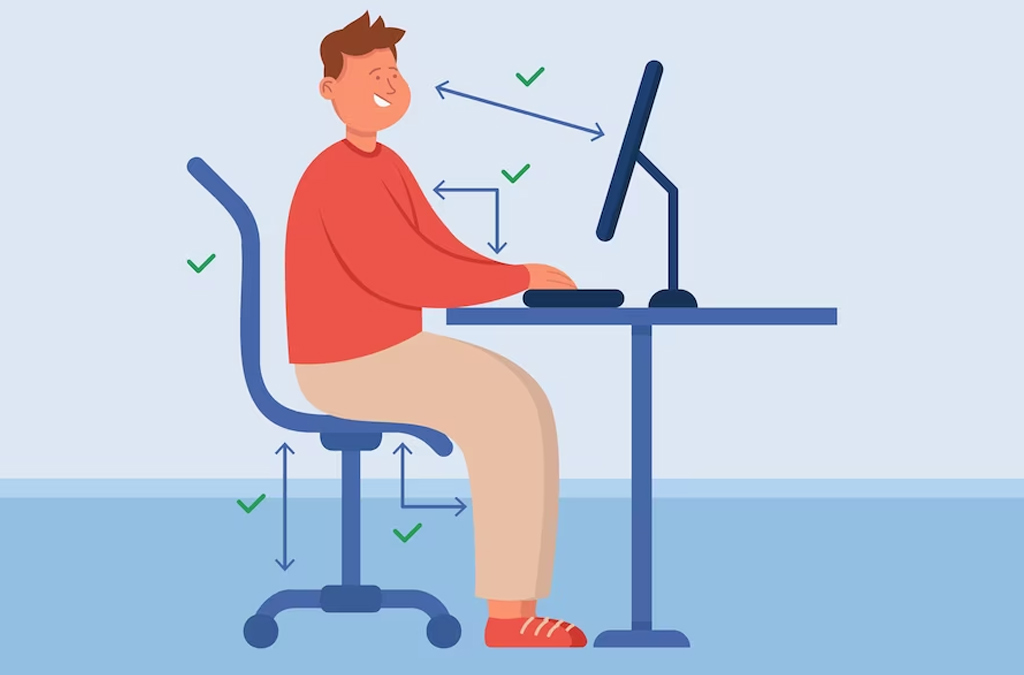
Imagine a workday where your chair becomes your loyal companion, and your legs mere appendages for navigating the short walk to the coffee machine. While comfort has its perks, this increasingly common scenario – prolonged sitting – harbors hidden dangers. Just like a rusty car engine, our bodies need regular movement to function optimally. But fear not, desk warriors and couch potatoes! This article equips you with effective strategies to counteract the detrimental effects of a sedentary lifestyle.
Why Sitting is the New Smoking

Think sitting is harmless? Think again. Research paints a concerning picture, linking prolonged sitting to a plethora of health problems, including:
- Increased risk of chronic diseases: Studies suggest a correlation between excessive sitting and an increased risk of heart disease, type 2 diabetes, and some cancers.
- Musculoskeletal problems: Sitting for extended periods can strain your back and neck muscles, leading to pain and discomfort.
- Obesity: Sitting burns fewer calories than standing or moving around. Over time, this can contribute to weight gain and obesity.
- Poor circulation: Staying immobile for long stretches can reduce blood flow, leading to varicose veins and other circulation issues.
- Cognitive decline: Some studies suggest a link between prolonged sitting and an increased risk of dementia and cognitive decline.
Breaking Free from the Sitting Trap: Stand Up and Move!
The good news: you can counteract the dangers of sitting with simple yet effective strategies. Here’s your action plan:
Embrace the Power of Movement Breaks
Don’t let your body become a human potted plant! Every 30-60 minutes, get up and move. Here are some ideas:
- Take a walking lap around the office
- Stretch your legs and arms at your desk
- Climb the stairs instead of taking the elevator
- Do some quick bodyweight exercises like squats, lunges, or push-ups
Invest in a Standing Desk (or Get Crafty!)
Standing desks are a game-changer, allowing you to alternate between sitting and standing throughout the day. If a standing desk isn’t an option, get creative! Stack some books on your regular desk to create a temporary standing workstation.
Make Meetings More Active
Meetings don’t have to be synonymous with sitting fatigue. Suggest walking meetings or stand-up brainstorming sessions to keep everyone energized and focused.
Walk and Talk
Turn phone calls into opportunities for movement. Pace around the office while talking or take a walk outdoors for fresh air and increased blood flow.
Hydration is Your Friend
Staying hydrated is crucial for overall health, but it also serves as a gentle reminder to get up and refill your water bottle regularly.
Combat Sitting Habits at Home Too!

The battle against sitting doesn’t end at the office door. Here’s how to break the sedentary cycle at home:
- Do household chores with more vigor: Turn chores into mini workouts by cleaning with extra energy and focus.
- Park further away from your destination: Adding a few extra steps to your daily routine makes a difference.
- Invest in an exercise ball for your desk or TV room.
- Incorporate movement into your leisure time: Take the stairs instead of the elevator, go for a walk during your lunch break, or try standing while watching TV.
Make it a Habit not a Chore
Find activities you enjoy in order to make movement a natural part of your day. Explore walking clubs, dance classes, or even a fun game of tag with your kids.
Listen to Your Body: When Comfort Becomes Pain
While movement is vital, don’t push yourself to the point of pain. If you experience discomfort during any activity, adjust the intensity or take a break. Remember, consistency is key, so aim for sustainable movement habits rather than short-lived bursts.
Conclusion
By incorporating simple yet effective strategies, you can counteract the detrimental effects of prolonged sitting. Remember, even small changes can make a big difference. Embrace movement, prioritize your health, and watch your energy levels and overall wellbeing soar!
You May Also Like….
- Nutrient Rich Foods for Enhancing Cognitive Function
- Nutrient-Rich Foods for a Nutrient-Dense and Balanced Diet
- Healthy Eating Plans for Different Calorie Goals
Frequently Asked Questions
Q1: I have a desk job. How much sitting is too much?
There’s no magic number, but experts recommend aiming to break up prolonged sitting every 30-60 minutes with movement breaks.
Q2: I don’t have time for exercise! Are there quick and easy ways to move more?
Absolutely! Here are some sneaky ways to sneak movement into your day:
- Park further away from your destination and walk the extra distance.
- Take the stairs instead of the elevator, even for just a few flights.
- Do some bodyweight exercises like squats, lunges, or push-ups during commercial breaks while watching TV.
- Set a timer on your phone to remind yourself to get up and move every 30 minutes.
- Invest in a fitness tracker that can monitor your activity levels and nudge you to move more.
Q3: What are some exercises I can do at my desk to counteract sitting?
Here are some simple desk exercises you can try:
- Ankle circles: Rotate your ankles clockwise and counterclockwise for 10 repetitions each.
- Neck stretches: Gently roll your head in a circular motion, stretching your neck muscles.
- Wrist stretches: Extend your arm and gently bend your wrist back and forth, holding each stretch for 15 seconds.
- Shoulder rolls: Roll your shoulders forward and backward in a circular motion for 10 repetitions each.
- Calf raises: Rise up on your toes and hold for a few seconds, then slowly lower back down. Repeat 10 times.
Q4: I have a disability that makes it difficult to stand or move around for long periods. What can I do?
If you have a disability, talk to your doctor or physical therapist about safe and effective ways to incorporate movement into your daily routine. There may be specific exercises or modifications you can do to counteract the dangers of prolonged sitting.
Q5: What are some resources that can help me learn more about the dangers of sitting and how to move more?
- The American Heart Association: https://www.heart.org/ offers information on the health risks of sitting and tips for staying active.
- The Mayo Clinic: https://www.mayoclinic.org/ provides advice on how to break up your sitting time and incorporate more movement into your day.
- The National Institute on Aging: https://www.nia.nih.gov/ has information on the link between physical activity and healthy aging.


